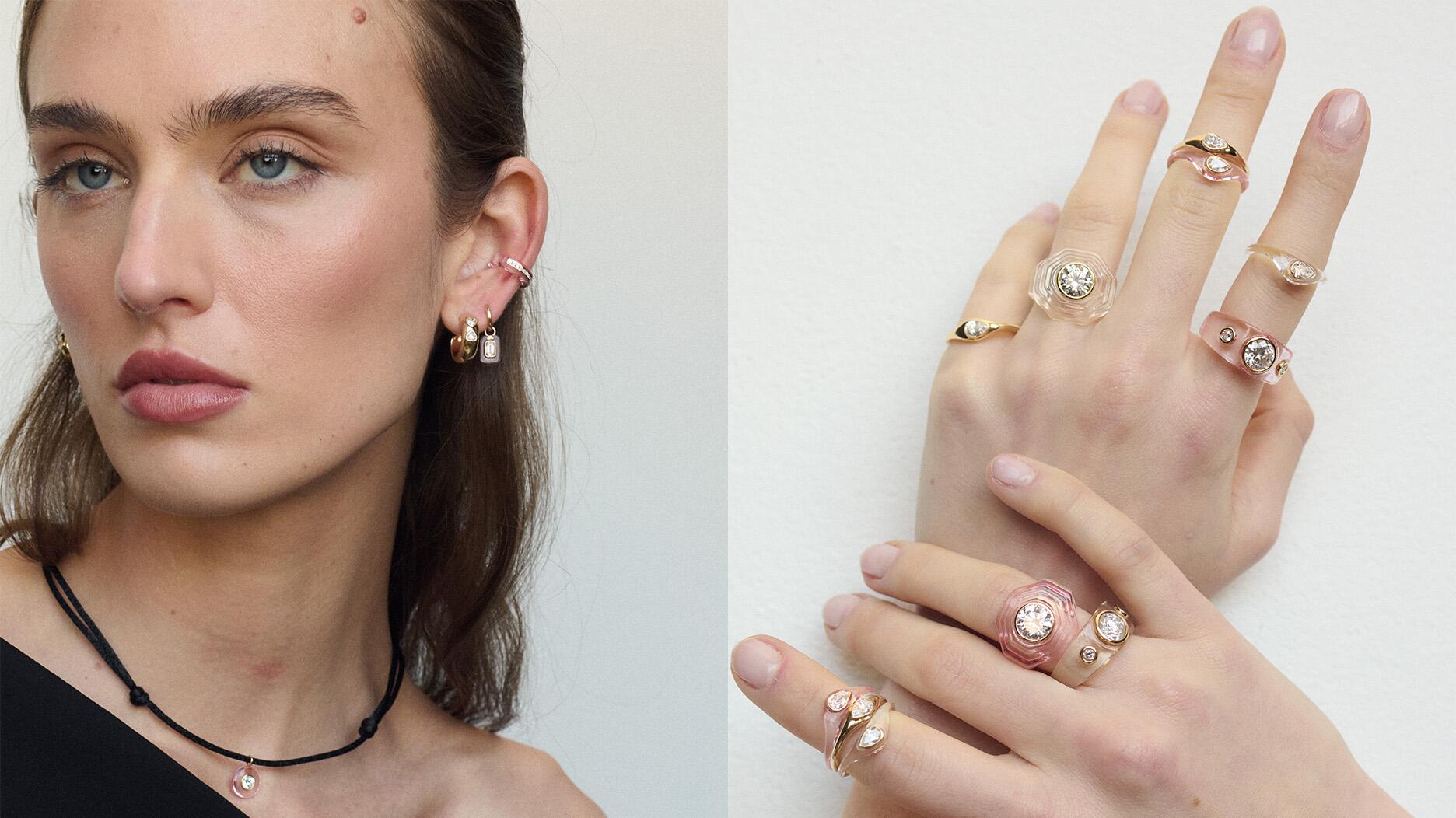These Are the Core Consumer Groups Buying Lab-Grown Diamonds
They include millennials of a certain age, women who buy jewelry for themselves, and “upgraders,” according to The MVEye.

Drawing on recent research, “The MVEye’s Core 3.5 LGD Consumer Segments” outlines the primary groups it says are driving the “explosive global growth” of the lab-grown diamond sector.
The groups identified through the research, as well as suggested communications strategies from the market research firm for each, are as follows.
Segment 1: “In the Know”
Who they are: This group is comprised of 25- to 38-year-old millennials who are already aware of lab-grown diamonds, whether it’s through friends or media. This group includes multiple ethnicities and non-traditional couples.
How retailers can reach them: The MVEye said retailers should focus on sustainability, social responsibility, and the technology behind the stones—offering them knowledge not only on the production process but also the ease of tracking them along the pipeline, co-founder Liz Chatelain said to National Jeweler.
They should also focus on what The MVEye calls the “price-to-value equation,” meaning they should point out to consumers that they can get more for their money with lab-grown diamonds.
After all, consumers are now willing to go over their initial budget to get a bigger and better diamond, Chatelain said.
Segment 2: “In the Dark”
Who they are: This group is comprised of 25- to 38-year-old millennials who haven’t heard of lab-grown diamonds but are easily convinced to learn more, the marketing firm said. This group also includes multiple ethnicities and non-traditional couples.
Chatelain said this is where retailers can have the greatest impact on customers’ buying decisions. She said it is their role to introduce these consumers to lab-grown diamonds, promote the product, and educate consumers about them.
She said retailers have told The MVEye that they introduce lab-grown as an option if the shopper wants a larger, good quality diamond that fits their budget. The conversion rate from an “assumed mine diamond shopper” to a lab-grown consumer can now be as high as 70 percent, she added.
How retailers can reach them: Focus on education and talking about the technology behind lab-grown diamonds as well as, again, the price-to-value equation.
Segment 3: “Upgraders”
Who they are: They are consumers ages 55 and older who are looking to upgrade their engagement rings. They may not already have a lot of knowledge about lab-grown diamonds, but they’re motivated to buy a larger diamond.
How retailers can reach them: This group has been marketed to the least, according to Chatelain.
But they do like to reward themselves, so communications should focus on budget, size, and how the stone is a deserved reward for the lives they have led.
“If retailers could bring that across to them [in ads], saying, ‘OK, it’s time to self-reward,’ that’s how they’re going to go get this group,” Chatelain said. “It’s a great opportunity, especially for independent retailers who really know their market.”
Segment 3.5: “SPF”
Who they are: “Self-purchasing females” of all ages.
Chatelain said they numbered SPF as 3.5 because there is crossover with the other segments.
How retailers can reach them: Chatelain said the consumer who buys for herself feels good about buying larger diamonds, a trend she believes will play out in items like stud earrings.
Based on The MVEye research, the most successful retailers are expanding into lab-grown diamond jewelry basics, like studs and solitaire pendants.
Other Key Research Findings
The MVEye said these consumers aren’t necessarily all about the digital shopping experience.
They’re interested in special experiences in-store, on social media, and on e-commerce sites, and will pay a premium for it.
For jewelry retailers, this means it’s important to track important client life events, like birthdays or anniversaries, so they can have targeted communications on these occasions and point out products clients might be interested in, making it clear they will cater to them.
“Now to the customer, it’s not about price; it’s about premium service,” she said.
And, interestingly, rather than buying products from stores, they buy from brands, The MVEye’s research found.
The idea of loyalty to a store has shifted to mean loyalty to brands within the store or because of the store’s location, Chatelain said, though she did also note their research shows shopper loyalty is greater for fine jewelers than others.
The Latest

It purchased the “Grosse Pièce,” an ultra-complicated Audemars Piguet pocket watch from the ‘20s, for a record-breaking price at Sotheby’s.

Chandler got his start at Michelson Jewelers and has served as DCA president and CEO since 2001. He will retire at the end of the month.

Sponsored by Digital Monitoring Products

How Jewelers of America’s 20 Under 40 are leading to ensure a brighter future for the jewelry industry.

The boutique is slated to open this week inside Terminal 8, offering pre-owned Rolex watches and more to international travelers.


The special-edition egg pendant ingested in a New Zealand jewelry store was recovered after a six-day wait.

Associate Editor Natalie Francisco plays favorites with Piece of the Week, selecting a standout piece of jewelry from each month of 2025.

Roseco’s 704-page catalog showcases new lab-grown diamonds, findings, tools & more—available in print or interactive digital editions.

The “Love and Desire” campaign is inspired by the magic that follows when one’s heart leads the way, said the brand.

Two awardees will receive free tuition for an educational course at the Swiss lab, with flights and lodging included.

Berta de Pablos-Barbier will replace Alexander Lacik at the start of January, two months earlier than expected.

Sotheby’s held its first two jewelry sales at the Breuer building last week, and they totaled nearly $44 million.

Winners will receive free registration and lodging for its fourth annual event in Detroit.

Here are six ideas for making more engaging content for Instagram Reels and TikTok, courtesy of Duvall O’Steen and Jen Cullen Williams.
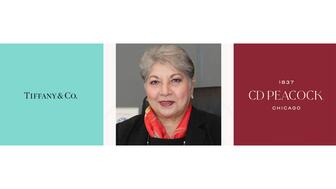
The honorees include a notable jewelry brand, an industry veteran, and an independent retailer.

Carlos Jose Hernandez and Joshua Zuazo were sentenced to life without the possibility of parole in the 2024 murder of Hussein “Sam” Murray.

Yood will serve alongside Eduard Stefanescu, the sustainability manager for C.Hafner, a precious metals refiner in Germany.
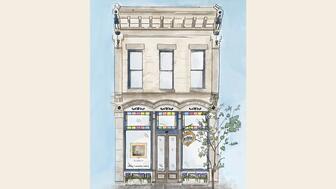
The New Orleans jeweler is also hosting pop-up jewelry boutiques in New York City and Dallas.

Set in a Tiffany & Co. necklace, it sold for $4.2 million, the highest price and price per carat paid for a Paraíba tourmaline at auction.

The jeweler’s “Deep Freeze” display showcases its iconic jewelry designs frozen in a vintage icebox.

Take luxury gifting to new heights this holiday season with the jeweler’s showstopping 12-carat sphene ring.

This year's theme is “Unveiling the Depths of the Ocean.”

In its annual report, Pinterest noted an increase in searches for brooches, heirloom jewelry, and ‘80s luxury.

Starting Jan. 1, customers can request the service for opal, peridot, and demantoid garnet.
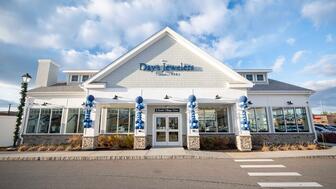
The 111-year-old retailer celebrated the opening of its new location in Salem, New Hampshire, which is its third store in the state.
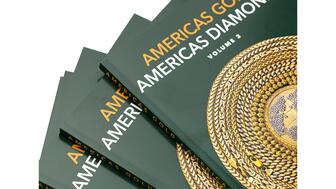
The new catalog features its most popular chains as well as new styles.
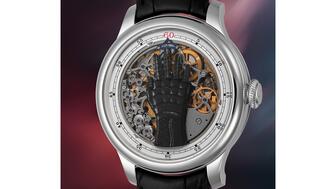
The filmmaker’s personal F.P. Journe “FFC” prototype was the star of Phillips’ recent record-setting watch auction in New York.

















